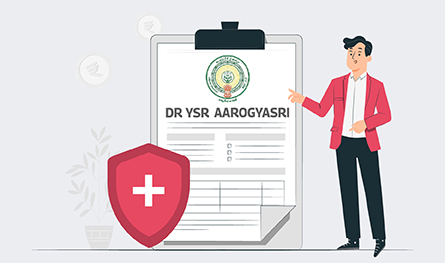Related Articles
 Jan 08, 2025
Jan 08, 2025
Is Varicose Vein surgery covered under the health insurance policy in India
 Health Insurance
Health Insurance


Embracing motherhood is a wonderful experience and with a maternity health insurance policy, the experience becomes all the more safe and secure. But you must buy your maternity insurance coverage in advance as there is a waiting period involved in such insurances. So, if you are planning to buy maternity insurance after conceiving your baby, you must rethink.
The increasing cost of health treatment including the exceptionally expensive maternity packages, procuring health insurance policy with maternity benefits has become crucial. Without insurance, the expenses that you have to incur on regular check-ups, medication and lab tests etc., during pregnancy might become a burden on your pocket. However, it is important to know all about the waiting period involved in maternity insurance before you buy a maternity insurance policy.
So, what is a waiting period in health insurance plans including maternity plans?
In any health insurance plan including maternity policies, waiting period is the time that a policyholder has to wait before availing the benefits of the plan. So, as an insured you can make a claim on your health insurance policy only when you wait till the completion of the waiting period. Further, even if you raise a claim during the tenure of the waiting period, it will be disapproved by the insurer.
The waiting period starts with the start of the policy. However, its end date might vary depending on the insurance provider and their policy terms and conditions.
Let us check the various kinds of waiting periods in health insurance policies.
There is a 30 days tenure of initial waiting period that every maternity insurance is levied with. This is the period when the insurer doesn’t approve any claims made by the insured except for medical costs incurred due to accidental injuries.
Generally, it can range between 90 days to 6 years. So, depending on the insurer, your maternity policy might have a waiting period that can be limited to 3 months or can go up to 6 years. This is purely dependent on the insurance company and their policies.
For pre-existing diseases, the waiting period generally ranges from 2 years to 4 years even in the case of maternity insurance. The insurer will not allow coverage for any pre-existing diseases during this period.
2 years is the normal waiting time for some specific procedures covered under maternity insurances. These particular diseases or procedures are usually mentioned in the policy document of the insurer.
The waiting period for a maternity insurance starts as soon as you buy the maternity health plan (same date). The insured must keep renewing the policy year on year without fail to be able to enjoy the benefits at the end of the waiting period. Once the tenure of the wait is over, the insured can avail the benefits of the waiting period by raising claims.
So, depending on the policy and the insurer, you must buy your maternity health plan well in advance to be able to avail its benefits when you actually need it, that is during pregnancy.
No, currently almost all maternity insurance plans are available with a waiting period. Further, even if you go for normal health insurance plans offering maternity protection, it comes with a waiting period. Thus, couples who want to start a family soon should procure maternity insurance in advance to get its benefits at the right time.
There are many riders available which can be used to reduce the waiting time for maternity insurance plans. However, it depends on your requirement whether these riders would be of any help or not.
PED rider is one such waiting period reduction add-on. It is used to cut the duration of waiting periods levied on the best health insurance plans, including maternity plans.
But, you must note that you need to pay additional premium to avail these riders. Further, some insurers may not offer such riders at all to cut the waiting period of maternity coverage.
The waiting period for maternity plans can range from 9 months to 6 years, depending on the policy and the insurance provider.
Pregnancy coverage is offered by all state Medicaid programmes without any cost-sharing. To find out if you are eligible for Medicaid in your state, you can take a quick test on Healthcare.gov. You can apply for Medicaid or CHIP at any time of the year if you are eligible because there is no open enrollment period for Medicaid.
The waiting period in health insurance refers to the amount of time the insured must wait after the health insurance policy is issued before they can utilise its benefits. From insurance company to insurance company, a waiting time has different terms and conditions.
Only two children who are still living are typically covered by maternity insurance coverage. However, some insurance policies do cover the third child of the insured during pregnancy.
You cannot buy maternity insurance while you are already pregnant because there is a required waiting period for such policies.

Paybima Team
Paybima is an Indian insurance aggregator on a mission to make insurance simple for people. Paybima is the Digital arm of the already established and trusted Mahindra Insurance Brokers Ltd., a reputed name in the insurance broking industry with 21 years of experience. Paybima promises you the easy-to-access online platform to buy insurance policies, and also extend their unrelented assistance with all your policy related queries and services.

.png)
For ages, Indian women have been neglecting their health while giving priority to other things or the other people in their lives. In fact, health has always been given the least priority in most Indian women’s life in the past. Thus, very less number of Indian women have bought health insurance policies for themselves. And so, most of them especially the elderly struggle with illnesses without proper financial support to take care of their medical expenses.

.png)
The quality of air continues to deteriorate in India, especially in the northern region with the air quality index (AQI) in the critical category. This has increased the need for health insurance policies amidst rising concerns about the effects of air pollution on human health.

.png)
Health insurance provides financial support during medical and health emergencies. To continue availing the coverage benefits of a health insurance plan, it is required to pay a premium by the insured to the insurance company. But do you know what all factors are considered to determine the premium when buying a health policy? Let’s find out!


To allow health insurance benefits to economically weak people, every state government of India offers some schemes. One such scheme is the Dr. YSR Aarogyasri health scheme offered by the state government of Andhra Pradesh to help the poor and deprived section of the society, which was launched in the year 2007 by then Chief Minister Dr YSR Reddy.
